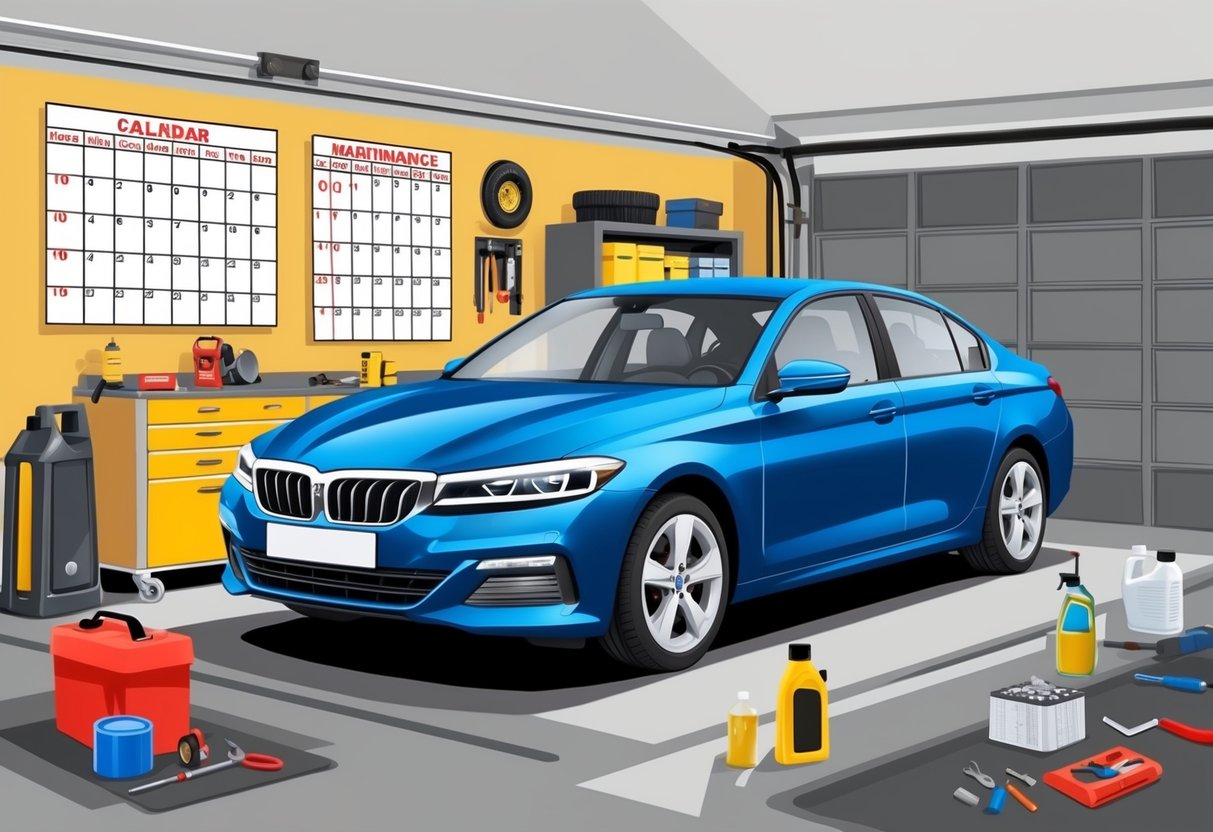
Recording and Tracking Your Maintenance History

Staying on top of maintenance records lets car owners control costs and avoid preventable repairs. Precise documentation is also important for validating warranty claims and improving resale value.
Benefits of Maintaining Records
Maintaining a thorough record of every oil change, brake replacement, and inspection offers several advantages. It provides a clear picture of a vehicle’s maintenance history that can prevent redundant services and help diagnose recurring issues.
A detailed log supports resale value, as buyers are more likely to trust a car with documented care. Accurate records are crucial for warranty claims, as manufacturers often require proof of scheduled services before honoring repair coverage.
If there’s a dispute about a claim, a well-documented service history can streamline the resolution. Keeping records can also reveal patterns, making it easier to spot early signs of wear or potential problems.
Owners who maintain DIY repairs or choose independent garages benefit from comprehensive logs as well. Prospective buyers or future mechanics are better equipped to assess a vehicle when provided records of work completed outside the dealership network.
Utilizing Maintenance Logs
Setting up and using maintenance logs can be simple and effective. Basic spreadsheets, mobile apps, or dedicated logbooks allow users to track each service with the date, mileage, type of service, and cost.
Some drivers opt for digital solutions that back up records and even remind users of scheduled tasks, which can be especially helpful for longer-term vehicle maintenance monitoring.
Useful logs typically include:
- Service date and mileage
- Description of work performed
- Replacement parts and fluids
- Service provider or DIY notes
- Cost breakdown
Digital systems let users generate summaries, download maintenance histories, or share logs with buyers. Regular updates minimize forgotten tasks and reinforce the habit, helping drivers plan future maintenance and spread out expenses.
With accessible records, warranty claims become straightforward and supported by verifiable documentation.
Leveraging Technology for Maintenance Scheduling
Using technology for car maintenance helps track records, saves time, and avoids unnecessary expenses. Modern tools make managing both one or multiple vehicles more efficient and organized.
Choosing a Reliable Mobile App
Selecting a mobile app is an essential first step for digital maintenance scheduling. A good app streamlines scheduling, offers user-friendly navigation, and integrates with third-party services for diagnostics or payment processing.
Many apps now allow you to customize maintenance tasks, input mileage, and receive recommendations based on your car’s model and age. Look for apps that store maintenance history securely, making it simple to access service records during resale or warranty disputes.
Some platforms, such as those mentioned by Appinventiv, support APIs for extra features, including real-time tracking and reporting. Comparison shopping can also help you find an app with the right balance of features and affordability.
Maintenance apps can help reduce costs by providing timely reminders and letting users stay proactive instead of reactive. The ability to customize notifications and adjust intervals means users are less likely to miss important services, preventing costly repairs.
Automated Reminders and Alerts
Automated reminders are one of the most valuable features of mobile vehicle maintenance apps. By using these alerts, drivers are less likely to forget oil changes, tire rotations, or inspections that could prevent major breakdowns.
Automated notifications can be set by mileage, date, or event triggers for optimal flexibility. Some platforms offer integration with digital checklists or fleet management software, as noted by Manifestly Checklists.
This feature is especially useful for families or businesses managing multiple vehicles. Alerts can be delivered via push notifications, SMS, or email for maximum convenience.
Keeping detailed logs of performed maintenance combined with timely reminders ensures the car’s value is preserved. Features like automated alerts also help drivers stick to a budget, avoid redundant maintenance, and track expenses over time.
Finding the Right Service Centers
Choosing a reliable service center can help maintain a car’s value and avoid unnecessary repair costs. Researching both the qualifications of technicians and the total expense of required services saves money and ensures long-term reliability.
Selecting Certified Professionals
Working with certified mechanics gives peace of mind that automotive repairs are performed to industry standards. Look for technicians with ASE (Automotive Service Excellence) certification or manufacturer-specific training, which demonstrates expertise with particular vehicle brands.
Many manufacturer-authorized service centers and independent shops display certifications in their waiting areas or websites. Certified professionals are more likely to diagnose problems accurately, preventing repeat visits and reducing unnecessary part replacements.
Check online reviews, request proof of certification, and inquire about ongoing training. Some customers also ask for recommendations from friends or local car clubs.
These steps help identify trustworthy experts who use quality parts and follow correct procedures.
Comparing Costs and Services
Before scheduling maintenance, compare prices and the range of services from multiple service centers. Cost differences can be significant, even for routine jobs like oil changes or brake pad replacement.
Request written estimates and read them carefully to make sure everything is included. Ask if the shop offers price matching, service bundles, or discounts, as some providers are willing to negotiate rates or honor coupons from competitors.
According to Consumer Reports, simply asking for discounts or available promotions can result in lower final bills. More on this can be reviewed at How to Save Money on Car Repairs.
Make notes of warranty standards for labor and parts. Some shops offer longer warranties, which increases value.
Finally, review customer feedback to ensure that low prices do not come at the expense of service quality.